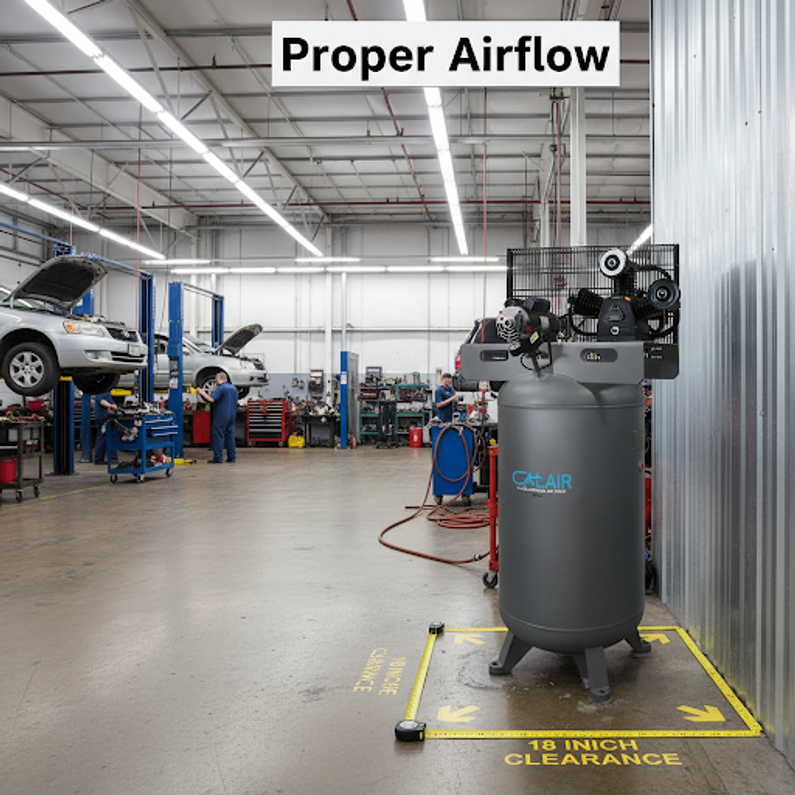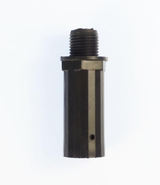The Hidden Threat: Why Proper Ventilation is Critical for Your Air Compressor's Health
An air compressor is the reliable workhorse of any shop, garage, or industrial setting. But if yours is breaking down too soon or constantly underperforming, the problem might not be a faulty part—it could be the air around it.
At Master Tool Repair, we often see customers ordering expensive replacement motors and pumps that failed prematurely, and the culprit is frequently the same: poor ventilation. Overheating is the single greatest enemy of an air compressor, and ventilation is your best defense.
Here is a breakdown of why proper airflow is non-negotiable for your compressor’s health and longevity.
1. Heat is the Engine Killer
The process of compressing air generates a tremendous amount of heat. Think of your compressor motor and pump as running a marathon every time you turn the unit on.
- The Problem: When an air compressor is crammed into a small, enclosed space or placed directly against a wall, the heat it generates has nowhere to go. The unit ends up constantly pulling in its own hot exhaust, creating a vicious cycle of rising temperature.
- The Damage: High operating temperatures rapidly break down the lubricating oil (for oil-lubricated units), stress electrical components, and cause thermal expansion that wears down seals, rings, and gaskets. This drastically reduces the pump’s efficiency and shortens the life of the motor, ultimately leading to a premature and costly failure.
2. The Impact on Air Intake & Filtration
A properly functioning air filter ensures the air entering the pump is clean. But poor ventilation introduces two major problems to the intake system:
- Hot Air: A pump pulling in 100°F air has to work much harder than one pulling in 70°F air to achieve the same pressure. This decreases your unit's Cubic Feet per Minute (CFM) output and increases energy consumption—a double hit to your operating costs.
- Dust & Debris: Poorly ventilated areas—like dusty corners or cramped utility closets—often contain higher concentrations of airborne contaminants. This forces your air intake filter to clog faster. A clogged filter is like trying to run with a hand over your mouth: the pump starves for air, causing inefficiency and overheating.
If your filters need replacing too often, check your ventilation setup. Master Tool Repair stocks high-quality Air Compressor Air Filters and Maintenance Kits.
3. The Moisture and Rust Factor
Ventilation is closely tied to humidity and condensation, which are primary factors in tank rust.
When hot air is compressed, the moisture it holds condenses inside the tank. If your compressor is operating in a constantly hot, poorly ventilated area, the machine and the tank never properly cool down, making it harder to evacuate moisture.
- The Damage: Excess trapped moisture accelerates rust and corrosion within the tank and on internal valves, such as the check valve and drain cock. Over time, this compromises the structural integrity of the tank and leads to seized or leaky components.
Simple Steps for Optimal Ventilation
Protecting your air compressor is easier than you think. Follow these three steps to ensure maximum airflow and component longevity:
- Give It Space: Position your compressor at least 12-18 inches away from any walls or objects on all sides. This clearance allows ambient, cooler air to circulate and carry the hot exhaust away.
- Keep it Cool and Clean: Always locate your compressor in the coolest, driest, and cleanest area available. Avoid placing it near heat sources (furnaces, radiators) or in direct sunlight.
- Implement Forced Air (For Stationary Units): If your unit is stationary and enclosed, install an exhaust fan or ducting to actively vent the hot air to the outside or to a larger area. This active measure can significantly drop the ambient temperature around the unit.
The Ventilation Payoff
Proper ventilation isn't just a best practice—it's a critical maintenance step that saves you money. By keeping your unit cool, you protect your pump, your motor, and your tank, drastically extending the life of your equipment.
When you do need quality replacement components—whether it’s a new pressure switch, a belt, or a complete pump—don't compromise. Trust the experts at Master Tool Repair for genuine OEM and high-quality compatible parts designed for superior fit, function, and lifespan.
Recent Posts
-
Troubleshooting Your Air Compressor When Your Motor Just Hums, Clicks, or Won't Start
There’s no sound more frustrating in a workshop than the failed attempt of an air compressor to star …Dec 17, 2025 -
Air Compressor Pressure Switches: Beyond the Basics of Adjustment
The Brain of the Beast: Understanding Your Pressure Switch The pressure switch is the unsung hero of …Dec 10, 2025 -
The Breath of the Pump: Why Your Air Compressor Needs a Healthy Crankcase Breather/Vent
Your air compressor is a powerhouse, a workhorse essential to your operation. We all know the import …Dec 4, 2025




